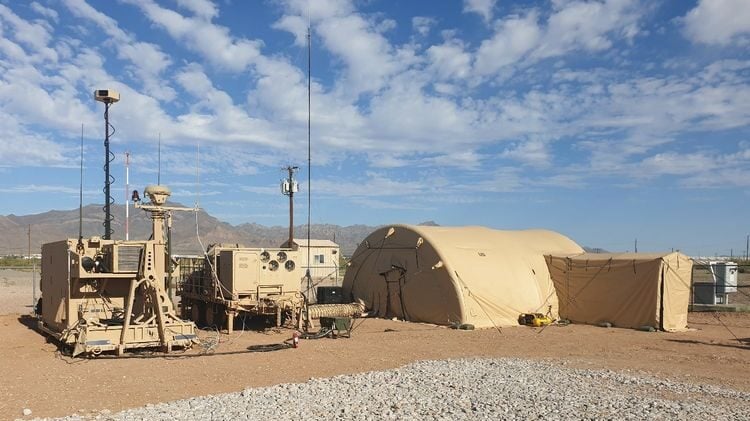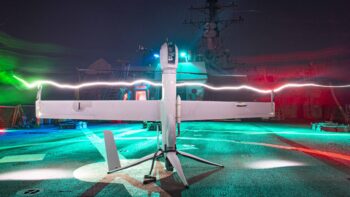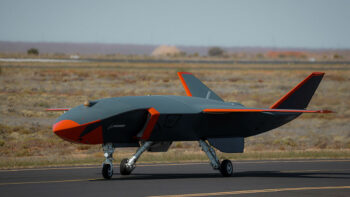
An IBCS engagement operations center set up at White Sands Missile Range, New Mexico, for the limited user test. (US Army)
SMD 2023 — Just as the Missile Defense Agency has unfurled plans to begin testing weapons and equipment to defend Guam from incoming aerial threats, the Army is moving out on an incremental test plan to tie new weapons into its command-and-control capability bound for the island, according to key Army officer.
Right now, the larger defense of Guam plan pulls a host of weapons from across the military, including three new, big-ticket Army capabilities — a C2 system called the Integrated Battle Command System (IBCS), the Lower Tier Air and Missile Defense Sensor (LTAMDS) radar and the Indirect Fire Protection Capability Increment 2 (IFPC Inc 2) launchers.
During this week’s Space and Missile Defense Symposium in Huntsville, Ala., Army Col. Chris Hill, the project manager of the Integrated Fires Mission Command Project Office, laid out for reporters how the Army plans to move forward with all three capabilities. Hill oversees the incremental Integrated Fires Test Campaign — designed, in part, to net the three capabilities together by 2027 — as well as the Army Long Range Persistent Surveillance (ALPS), Lockheed Martin’s Remote Interceptor Guidance-360 (RIG–360), Sentinel A3 and A4 radars.
Hill said the test series this year focuses on IBCS and LTAMDS integration. Then in 2024, if the Army has received Dynetics’ delayed IFPC Inc 2 prototypes and initial tests with those are deemed a success, the service will test out integration between IBCS, LTAMDS and the new launchers. Those remaining capabilities will also be folded into the test plan ahead of that looming 2027 date.
As Hill and other Army leaders eye the larger air defense test plan, they are also working on getting the new equipment into soldiers’ hands. IBCS will be the first big-ticket item of the trio to go, and Hill is eyeing the July to September 2024 timeframe for meeting that milestone.
Right now, Northrop Grumman is making hardware and software changes to the low-rate initial production IBCS variant and anticipates delivering the first units around the beginning of 2024. The service plans to conduct developmental testing before sending the updated IBCS to soldiers with the 343rd Field Artillery Battalion around the March timeframe. Once they’ve received it, they will begin new equipment and collective testing before an operational test towards the end of the year.
“It’s not that far away,” Hill said of the fielding date.
“The operational test event will happen at the end of calendar year 24 [but] going into that event, when we complete collective training, the unit is considered trained and [IBCS] fielded,” Hill said separately.
The Army then plans to begin rolling out IBCS to other Patriot units at a rate of two battalions per year and Hill said he anticipates soldiers will spend six to eight months learning how to operate the new C2 system. There are currently 15 such battalions across the active-duty force but that number is anticipated to grow.
“Then in the 2027 timeframe is when LTMADS [radar] should come on board,” Hill added.






















